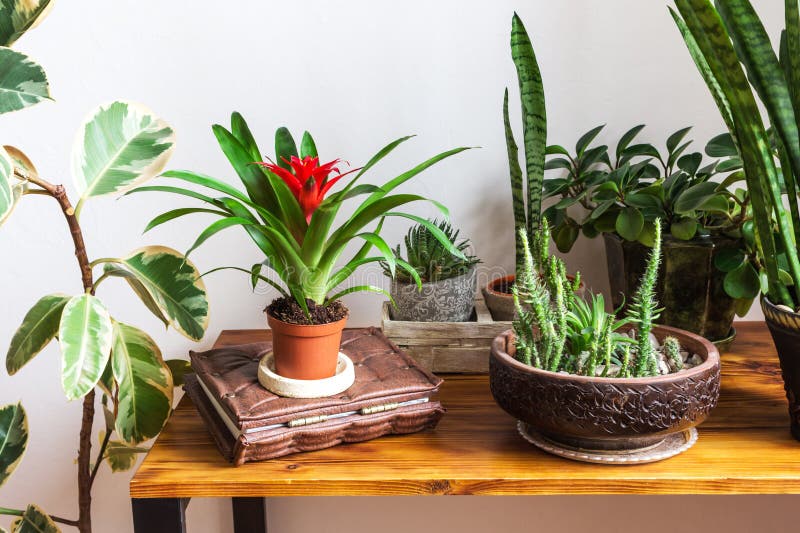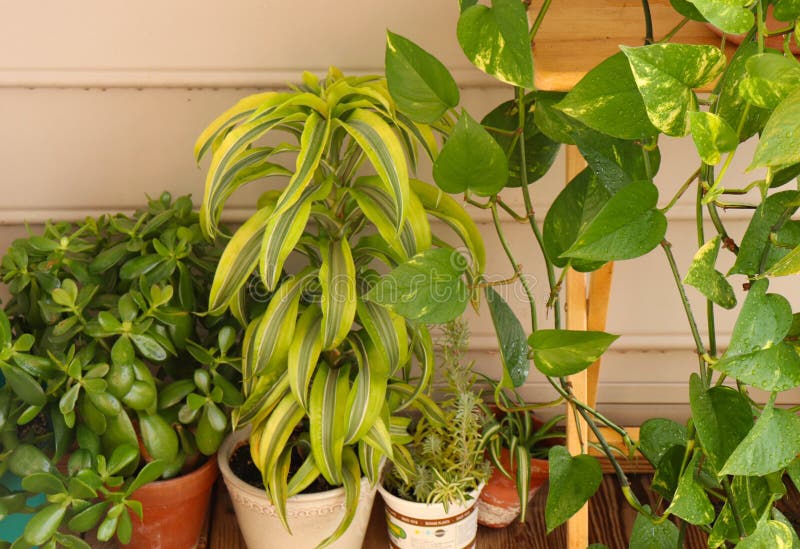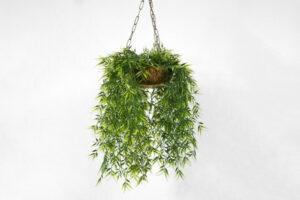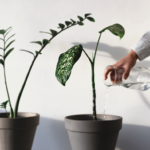HousePlantJoy is supported by our audience. When you purchase through one of our links, we may earn a small affiliate commission. As an Amazon Associate I earn from qualifying purchases. Your cost is not affected.
==================
CAN HOUSEPLANTS GO OUTSIDE IN SUMMER
Can houseplants go outside in summer? Remember that throughout history, our plants grew primarily outside. We choose to make them into inside plants to further our enjoyment time with them. But they remain plants that enjoy the outdoor environment. However, with our indoor houseplant choices, we often add plants that could not survive our climate. For instance, the arid-loving cacti often drown in a cold or rainy region. They may enjoy peeking outside from within your sunny bay window protection, but prefer to stay warm and dry. Likewise, plants that need cooler, shady conditions do poorly when put outside in the sunny South summers.
We’ll go into what you need to know to put your houseplants outside in this post. Enjoy the benefits of growing plants outdoors, know when to do it, and understand how to transition houseplants to their new environment.
Is it possible to get all plants outside?
Well, nearly all of our indoor flowering plants can be transplanted to the outdoors. In reality, they would adore being outside in the fresh air. When putting the plants out, the most crucial consideration is the strength of the outside sunshine. Just because a plant can place outdoors doesn’t mean it should be in direct sunlight. Plants should place in areas that mimic indoor lighting requirements.
How Can Houseplants Go Outside in Summer and Thrive?
Your houseplants will flourish outside for a variety of reasons:
- Almost always, rainwater is superior to drinking water. The additives in drinking water are toxic to certain species. So rainwater will prove more beneficial.
- Rainwater also seems to work miracles because it contains nitrogen in a way that plants will use, and your houseplant will love it.
- Rain will also wash away some dust that had built up on the leaves when you were indoors. It’s like giving yourself a facial and getting rid of all the dirt.
- If the leaves of plants are clean, they would be able to photosynthesize more effectively.
- Outdoors, humidity and air ventilation will have all your tropical plants need to survive. The plants would be sturdier and heavier as a result of the air circulation and breeze.
- After a few months outside, plants that have never done anything for you indoors will always take off and flourish luxuriantly.
What plants can move outside?
1. Cacti and Succulents
Succulents and cacti excel in the outdoors, which should come as no surprise. These plants love bright light and dry out between watering.
However, just because they’re desert plants doesn’t mean you should throw them outdoors in the sunniest spot and expect them to survive. If you live in a humid or rainy climate, you may need to keep these plants in a covered location. Shield them from the rain, but ensure full sunlight.
2. Ponytail Palm
The ponytail palm enjoys being outside. Although it is known for being low-maintenance and can thrive indoors, it often develops flower stalks and grow to 20 feet tall. Ponytail palms enjoy full sun, but they can also thrive in low-light environments.
3. Hoya
Hoya plants make lovely hanging window plants, but they can also thrive on the opposite side of the glass. They enjoy soft, indirect sun, as well as sticky, but not wet, dirt. Keep them close to your house or on your patio.
4. Amaryllis
Your vibrant amaryllis, which thrives on a windowsill, will also thrive in the open air. These plants flourish in bright, indirect light with frequent watering and are known for being relatively quick to bloom.
5. Snake plant
Snake plants seem to be able to thrive in any setting, including the outdoors. While snake plants can survive in low light, they grow in a wide range of light conditions. In between watering, allow them to dry out.
How to Acclimate Your Plants Properly
Acclimating the plants is one of the most manageable bits of gardening advice. It is particularly true if you’re bringing indoor plants outdoors. It’s also a good idea for starter plants you’ve bought from a nursery.
When acclimating your plant to the outside, take it gently at first. Indoor plants should move to a brighter place inside your home every day before you’re able to take them outdoors. Take your starter plants outdoors and put them in the shade if you’re not storing them in the sunniest spot in the yard.
Since plants growing indoors have not been exposed to wind, put the seedlings behind a windbreak when they first go outside to avoid breakage when they harden. Allow your seedlings to receive an additional hour or two of sun and wind each day in advance to keep them strong enough to be planted. If your seedlings begin to wilt during the acclimation period, transfer them to a shadier location or bring them back inside.
1. Begin by doing a mix of indoor and outdoor activities.
Within your house or condo, they begin preparing for their new home. At night, keep your houseplant here. When morning comes, take the plant outside and place it in the shade. It will allow it to gradually adjust to the strength of the sunshine and the temperature.
2. Recognize watering and fertilizing the plants more often.
A thirsty plant is kept warm. You might be watering your houseplant more often than when it first was in your building. That isn’t unusual. Just make sure you’re not watering your houseplant to do so since root rot and other overwatering problems will also occur.
Is it true that once my plant is outdoors, I’ll have to give it more water?
Rainfall, wind, and humidity all influence this. The same rules exist when inspecting the soil for moisture as they do when inspecting the interior. 2″-3″ into the dirt, place your finger. If it feels dry, thoroughly water it, wait a day, and then recheck it. When your plant is outdoors, you will notice that it needs more water, although this is not necessarily the case. It’s essential to keep an eye on any plants you’ve moved outside.
You’ll even increase your houseplant’s fertilizer consumption, so it will crave nutrients as much as it desires water.
Increase Fertilizer
Plants flourish in the open air and get more natural light while they are outside. Fertilize your plants a little more than usual before you bring them outdoors to accommodate the increased growth.
A plant that is growing spindly and pale may be lacking in an essential nutrient. Deficiencies can generally treat with a scoop of organic manure fertilizer or industrial fertilizer, but be cautious not to overfeed, as this may cause other issues.
3. Keep the plant out of direct sunlight.
Your houseplant is now ready to go outside for the summer. It is fantastic! So, where are you going to keep it now? Anywhere that the plant would not expose to the full brunt of the sun at first. We can’t emphasize this point enough.
Too much sunshine can not only cause your houseplant to go into shock, but it can also burn the fragile leaves of your plant. You can start your plant in a shady location and then move it to an area anywhere it gets some sun but not direct sunlight. If you’re already doing that, leave the plant there for several hours before bringing it inside.
As the plant adapts, you can gradually increase the amount of sunlight, it absorbs hour by hour. Your houseplant will finally adapt to the point that it is ready for more overt light, which could take several weeks. Even so, in the summer sun, don’t make it too hot.
Is there a chance that my plant would get sunburned?
Well, indeed! And sun-loving plants may burn if not properly acclimated or put in direct sunlight. Sunburn usually is not fatal. You should clip off the damaged leaves and wait for new ones to grow in their place. If you move your plant to a shadier spot, it will recover.
4. Have an eye out for insects.
For a houseplant, you should worry about bugs. All has changed now that your plant is outside. Some people also want to eat your precious houseplant. Having a few natural insect remedies on hand is a safer choice.
5. What temperature would be suitable?
As previously said, frost is a major determinant of when you should switch your houseplants. It’s not time yet if there’s already snow on the ground in the mornings. You’ll have to wait until all of the snow has melted and then another two or four weeks.
The outdoor temperature, particularly at night, can also help you determine when it’s time to move your houseplant.
6. Ensure Proper Container for plant
In the winter, houseplants usually don’t care much about their crowded roots, but it’s a different matter in the summer. If they’re out in the open and their bucket is full of thirsty roots, they’ll dry out quickly. Reduce the houseplant care responsibilities and inspect the root system before taking a plant outside. If required, repot. Gradually increase the height; a 2-inch increase should suffice. Make sure your plant isn’t swimming in an overly large foundation.
7. What to do in Rainy Days?
Always be aware of the wind and safe and cover your plants if the light rain transforms into a full-fledged windy thunderstorm. Failure to protect them from strong winds and rain might destroy their foliage. Take precautions to shield the sun-sensitive plants from the sun’s harsh rays.
Some plants prefer to stay indoors, consider your climate
If you have a tropical indoor plant and live in an area with cooler summers, avoid bringing it outside. Since these houseplants have very particular temperature needs, the changing summer weather is unlikely to provide the necessary steady humidity. The following plants are among these:
- Chinese evergreens
- Indoor palm trees
- Weeping figs
- Begonias
- Philodendrons
- Bromeliads
- Laceleaf
- Dumb canes
However, for those living in more warm, humid zones, these plants often flourish outside during the spring and summer.
Can houseplants go outside in summer? In Summary
So, can houseplants go outside in summer? Yes, most indoor plants vacation quite well outdoors in summer. But you need to consider each plant, it’s proper environment, and location. And then, move them slowly, so as to acclimate them. However, given the right considerations, your plants might enjoy their summer vacation outside and reward you with new growth and beauty!
Read More:
How to Re-Pot a Boston Fern: Elevating Your Outdoor Ferns Oasis with Elegance











